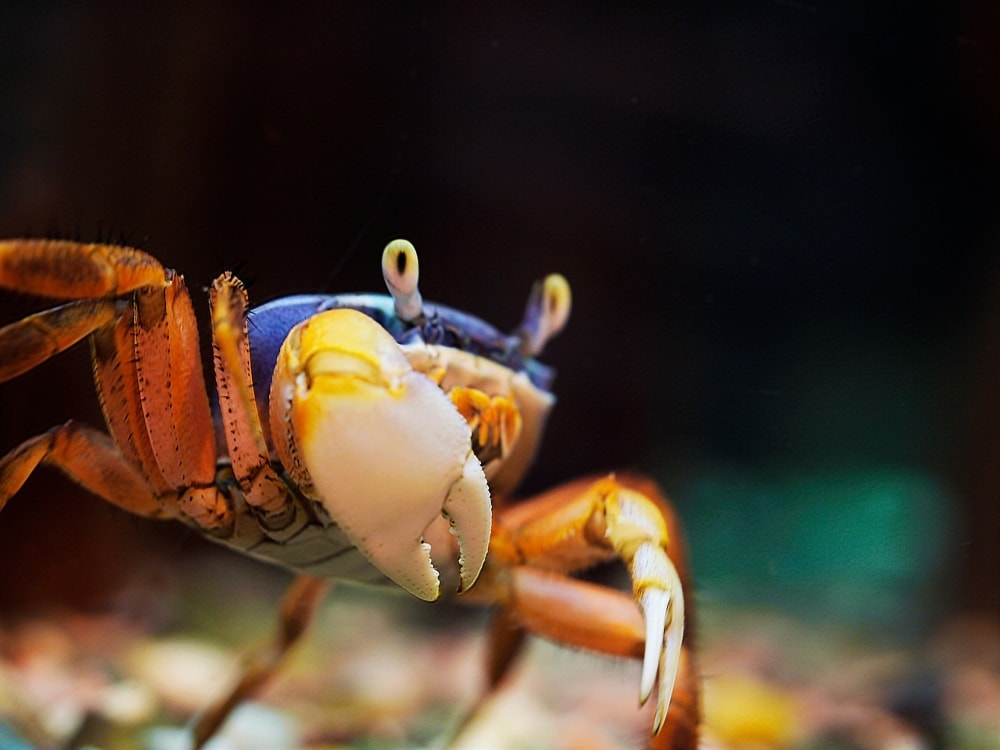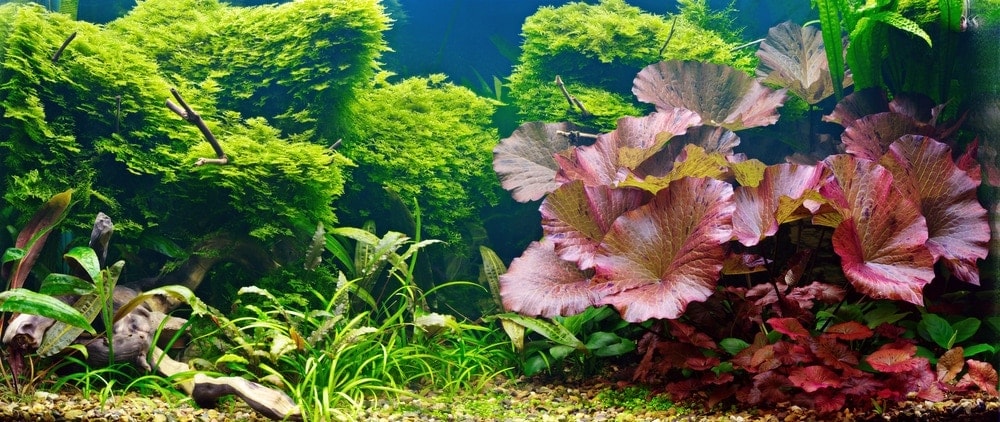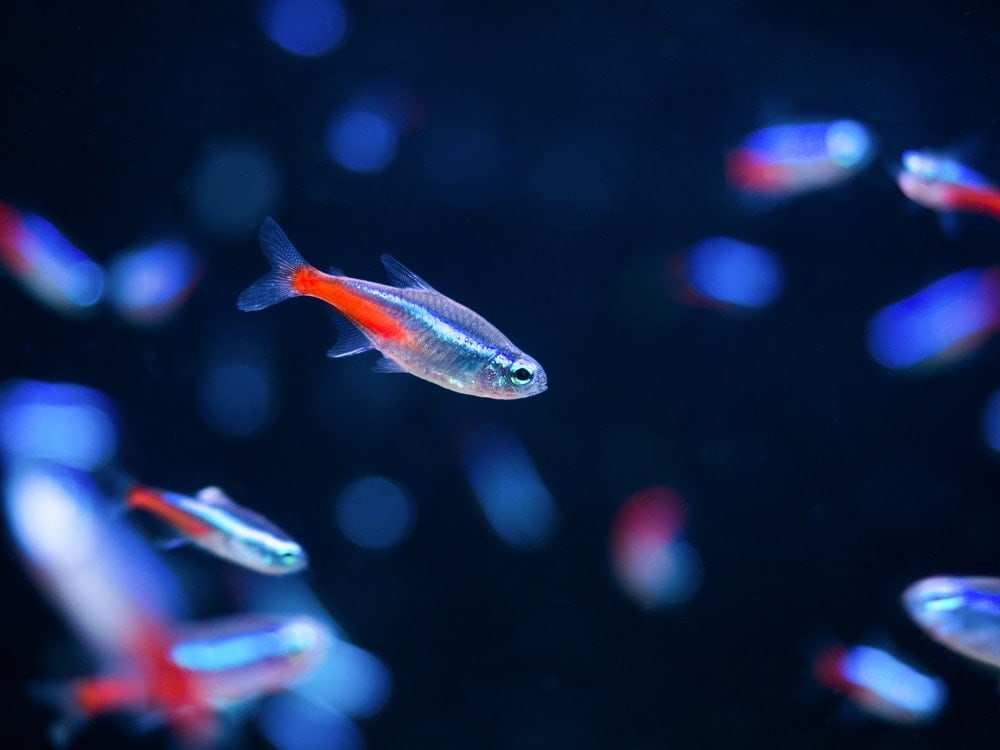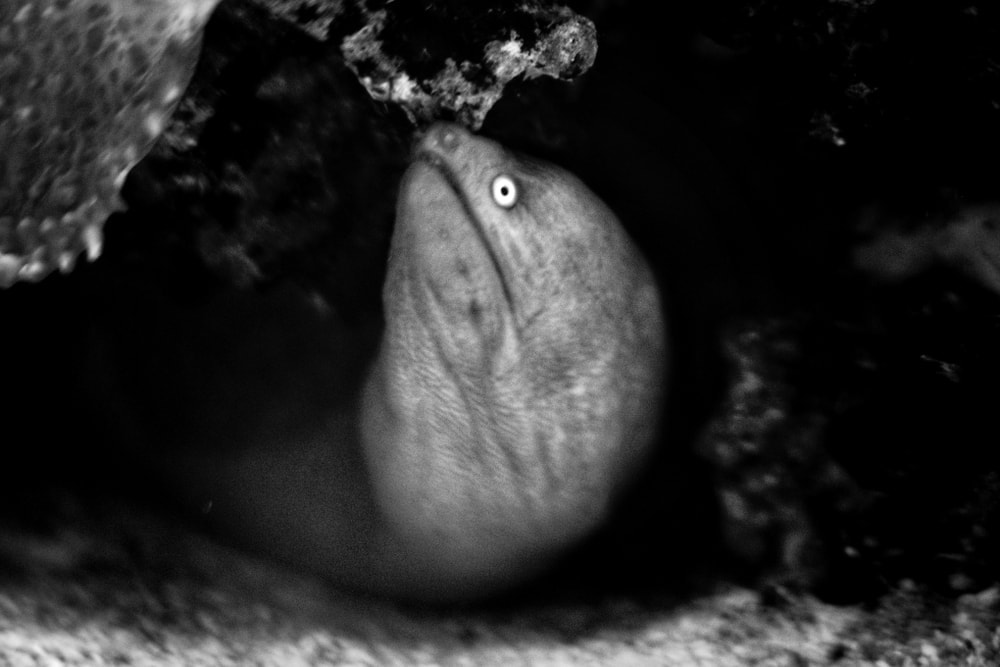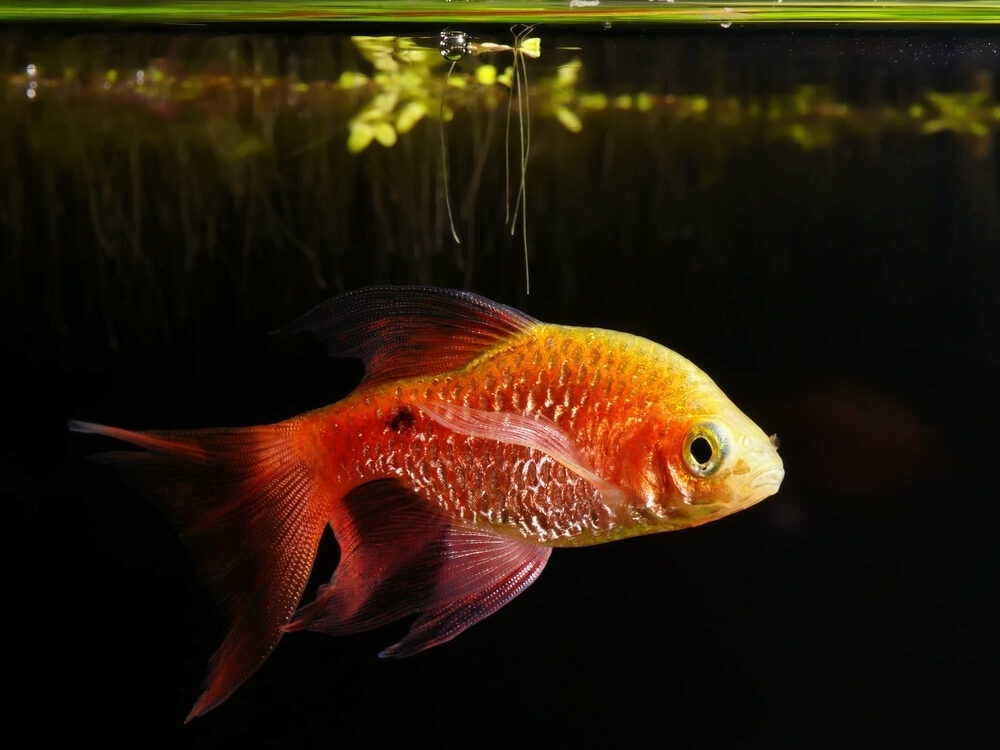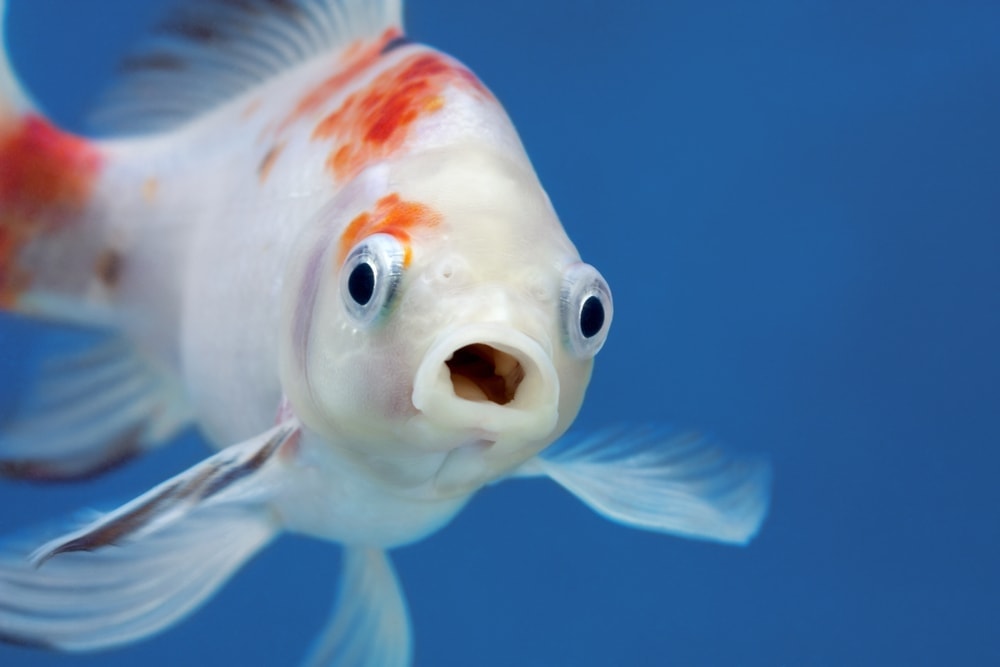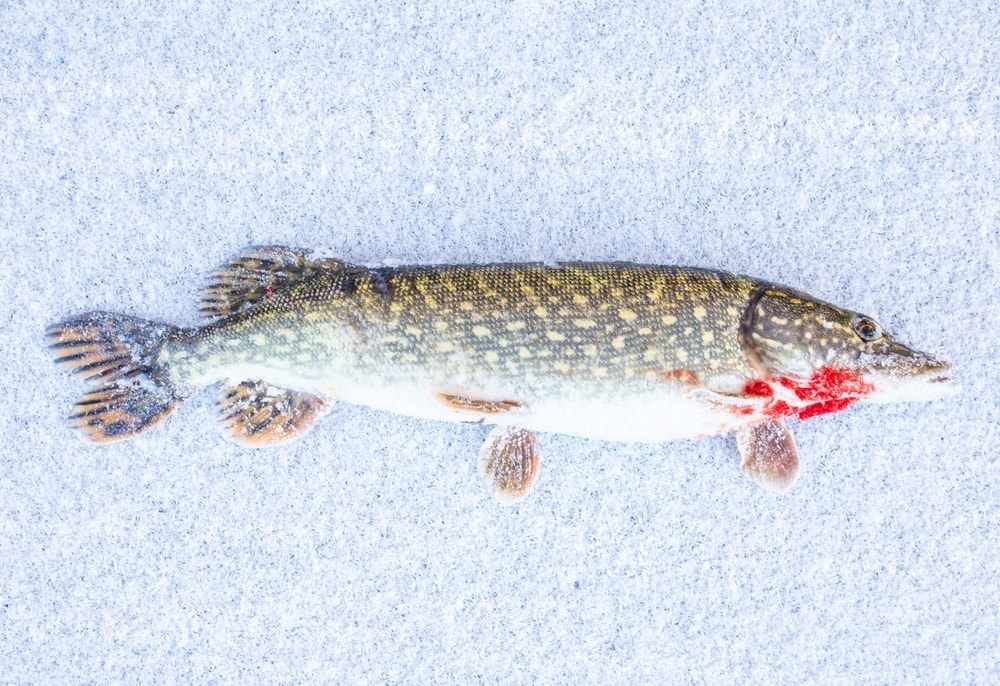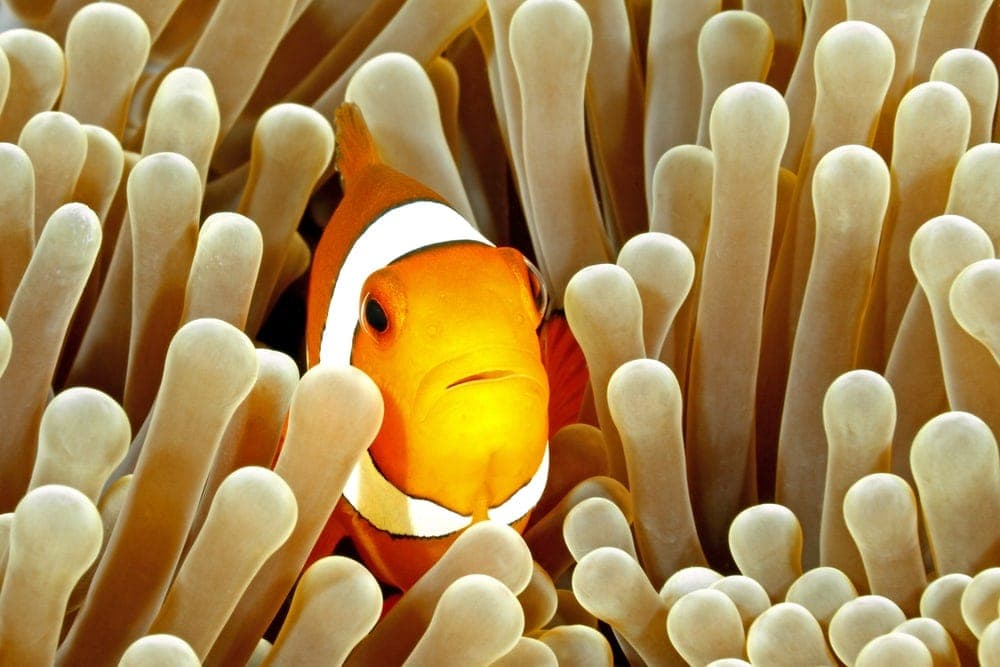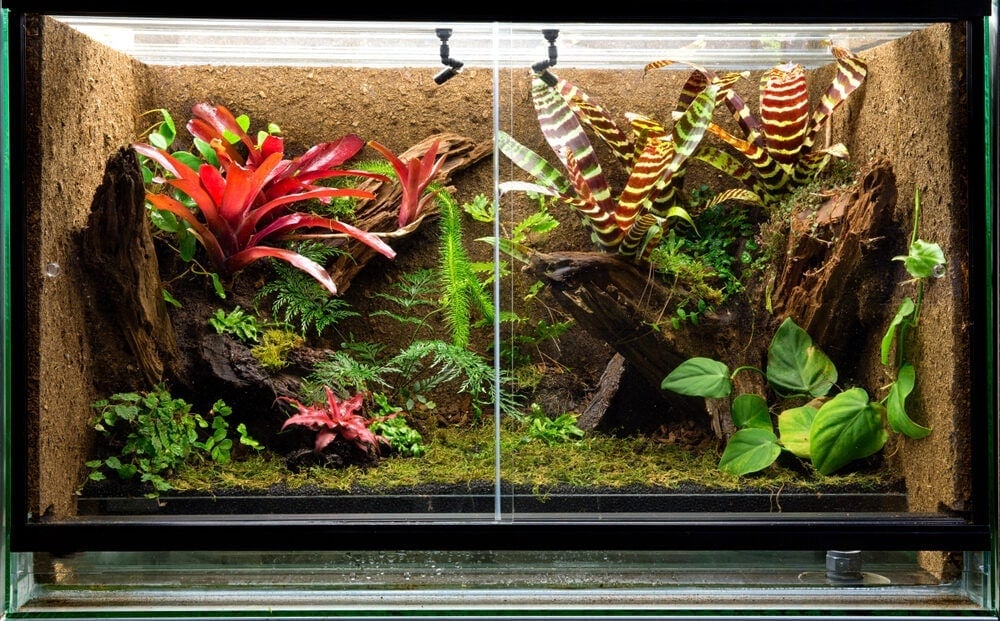Crabs are still rather new to the aquarium industry but are nonetheless humble, though that is not the message when you first lay your eyes on them.
You should also be quite unsettled if you don’t feed your crab well and on time, this is so because species like the panther crab will turn your slow-moving fish into a snack.
Crabs are also good escape artist and will majestically walk out of the aquarium, remember they don’t swim or float in water, but rather climb and walk. You should, therefore, ensure that if you are going to integrate a crab species in your aquarium then invest in a fitting fish tank hood. Crabs are freshwater invertebrates meaning they lack a backbone.
Remember that some freshwater crabs require landspace in your aquarium!!
Other freshwater invertebrates are such as the shrimps and snails, we will, however, sample 7 freshwater aquarium crabs that you can substitute with the snails and shrimps in your freshwater aquarium.
7 Freshwater Aquarium Crabs
1. The panther crab
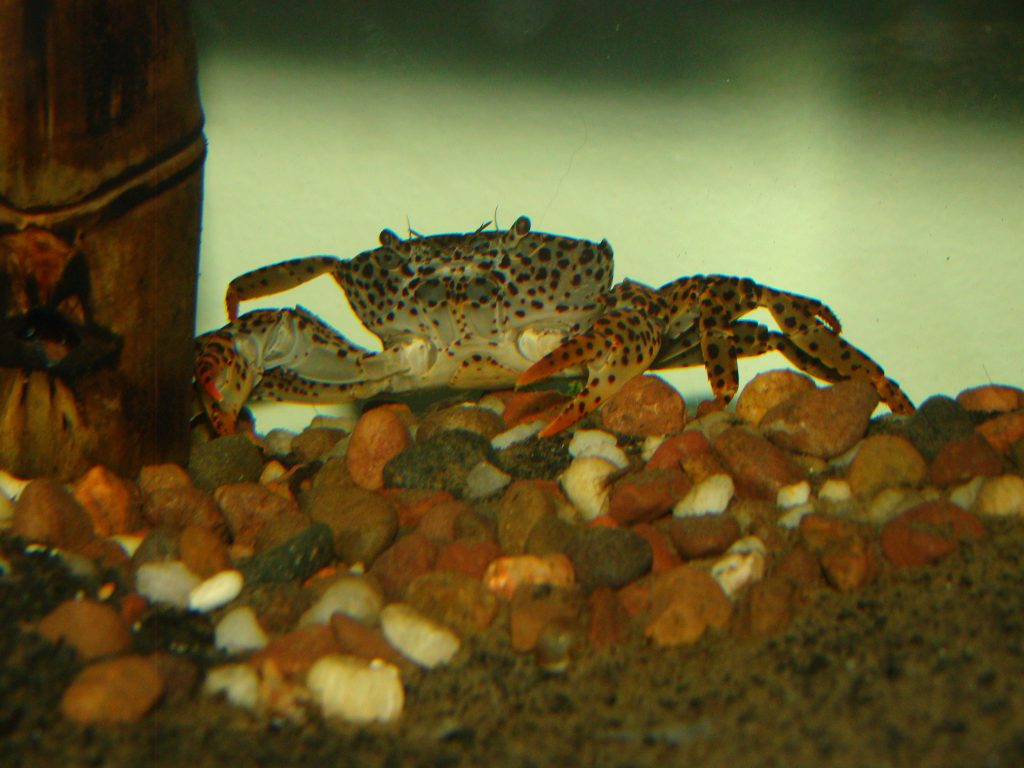
Panther crabs are not aggressive but if your aquarium fish tempts it by sleeping at its sight or move slowly when its stomach is growling with hunger, you never know when it will decide to pounce on one, which is what it will most likely do. The crab is also very territorial when paired with its kind in an aquarium and it would, therefore, be in your own interest to offer a variety of hiding spots.
Feeding
Panther crabs delight in foods of both plant and animal origin, however, a good percentage of their food consists of meat. They are scavengers and will dig through the substrate in search of small insects and Bloodworms. Therefore, to ensure that they get maximum nutritional benefits then you could provide them with commercial pellets, or the veggie and algae wafers.
Tank requirements
Crabs will thrive in waters with higher PH and temperatures. A heavily planted fish tank should suffice, one which is inclusive of driftwood and rocks. Filtration and lighting should not bother you, as they don’t have very strict requirements.
Compatibility
Failure to feed your crabs will definitely motivate them to attack your aquarium dwellers and if you are keeping the bottom dwellers then they are going to be the first on the list. Invest in heavy plantation to provide a lot of hiding options and feed you crabs well so that it doesn’t turn its tank mates into a delicacy.
2. The Fiddler Crab
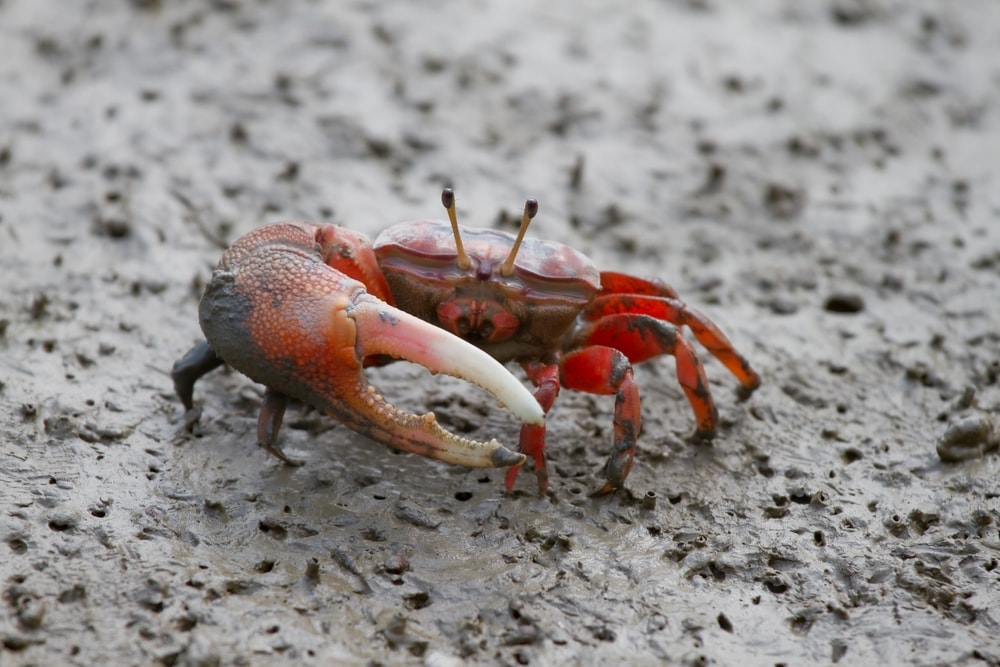
Fiddler crab is also known as the calling crab and the large claw is an indication that your crab is male, while the females do have two small claws. Now don’t be deceived by the large claw and think that it is used for feeding, nop! Its main purpose is to entice their female counterparts into mating and as a weapon for fighting or to threaten other male crabs.
Remember that these crabs need a land area!
Compatibility
The best way to ensure that your fiddler crab lives peacefully with its tank mates is by housing them in a big tank, like a 20-gallon tank but ensure to meet the needs of the fishes. Brackish fish will thus do well with the fiddler crab.
Feeding
To offer optimal nutrition you could feed you crab some algae, seaweed, shrimp or crab pellets. Blanched vegetables is an addition to its nutritional needs.
Tank requirements
For the fiddler crab tank, it would be best not to really invest in heavy plantation rather put some driftwood, rocks would also be a great addition and some sand. A good tank size would be 15 gallons and temperature ranges of about 75 degrees.
3. The Pom Pom crab
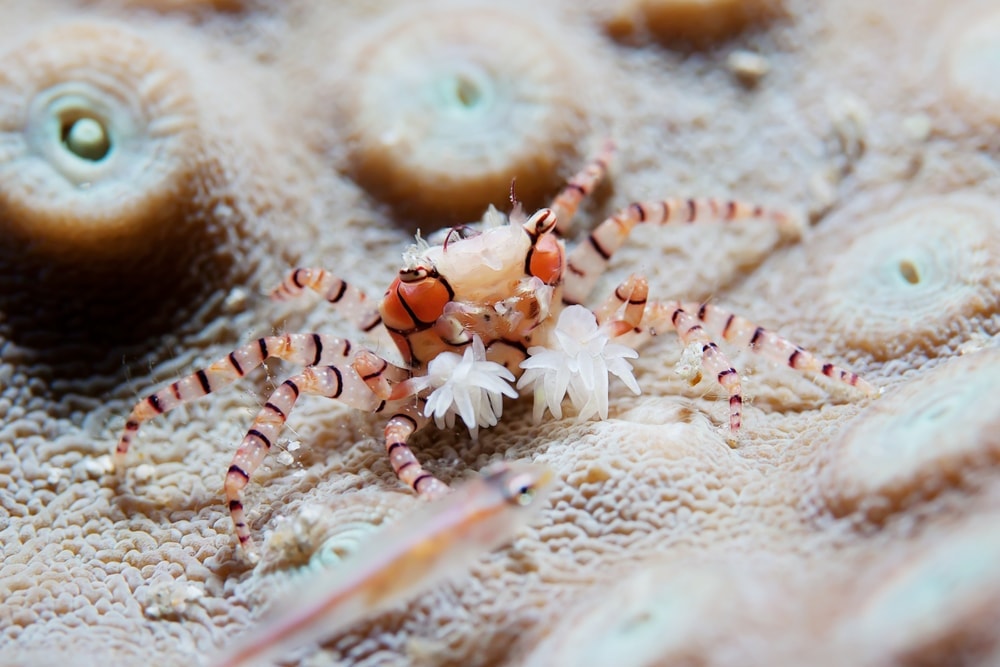
The pom-pom crab derives its name from the living sea anemone that they carry in their claws, if you take a good look at the anemones you will notice that they resemble pom-poms. They are an aggressive type of crab and will beat their enemies with the pom-poms when fighting for food. The pom-poms don’t cause much damage to their enemies because of their tiny size.
Tank requirements
The ideal temperature for a pom-pom tank is 80 degrees and a PH of 6.5 to 7.5. Since pom poms love feeding on decaying matter and detritus, live plants are a necessity in the tank. Though fully aquatic the pom-pom crab is also an escape artist and will sneak out of the aquarium whenever it gets the opportunity.
Compatibility
Fast-moving fish will be a welcome idea if you are keeping the pom-pom crab, but ensure that they also don’t dwell in the bottom area of the fish tank.
Feeding
A good diet for the pom-pom crab would consist of blood worms, chopped fish and clams, and the plant-based invertebrate pellets and wafers.
4. Thai Micro Crabs
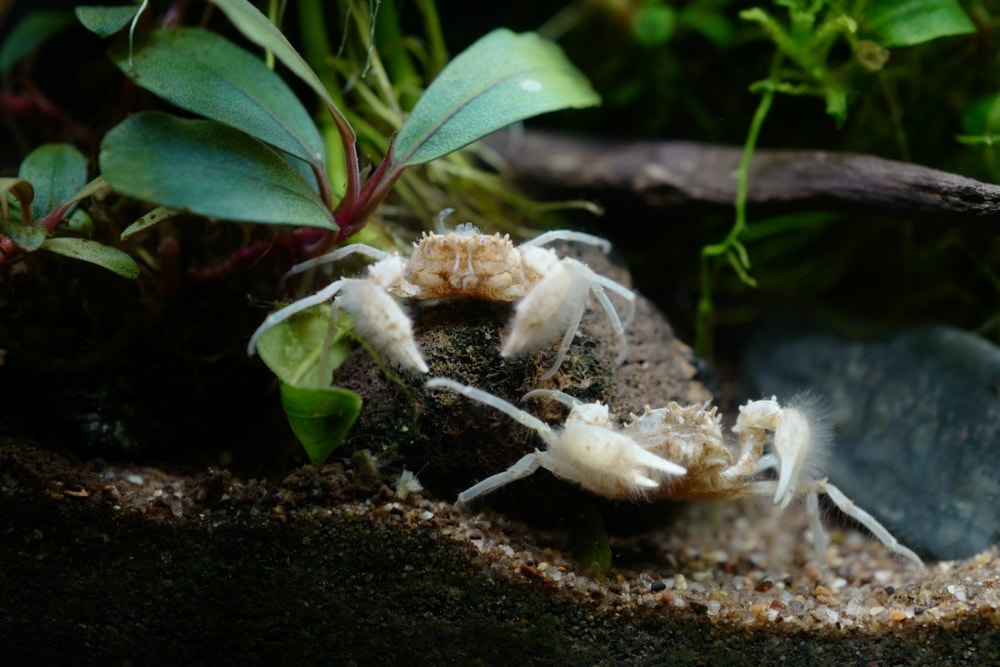
Tank requirements
The Thai Micro Crabs like their name suggests are very tiny, a situation that calls for a sponge filter, water temperatures between 72 and 82 degrees would be highly appreciated. Live plants are a necessary inclusion in the aquarium because the micro crabs don’t fancy publicity and water PH can be slightly soft or neutral.
Compatibility
Despite being the community type of crab they can make a tasty snack for a variety of fishes, you could, therefore, pair it with the pygmy corydoras, and the non-aggressive schooling fish.
Feeding
A mix of proteins and vegetables will work wonders for the shrimp and you could thus feed it on the vegetable wafers and either frozen or live daphnia and bloodworms.
5. The vampire crab
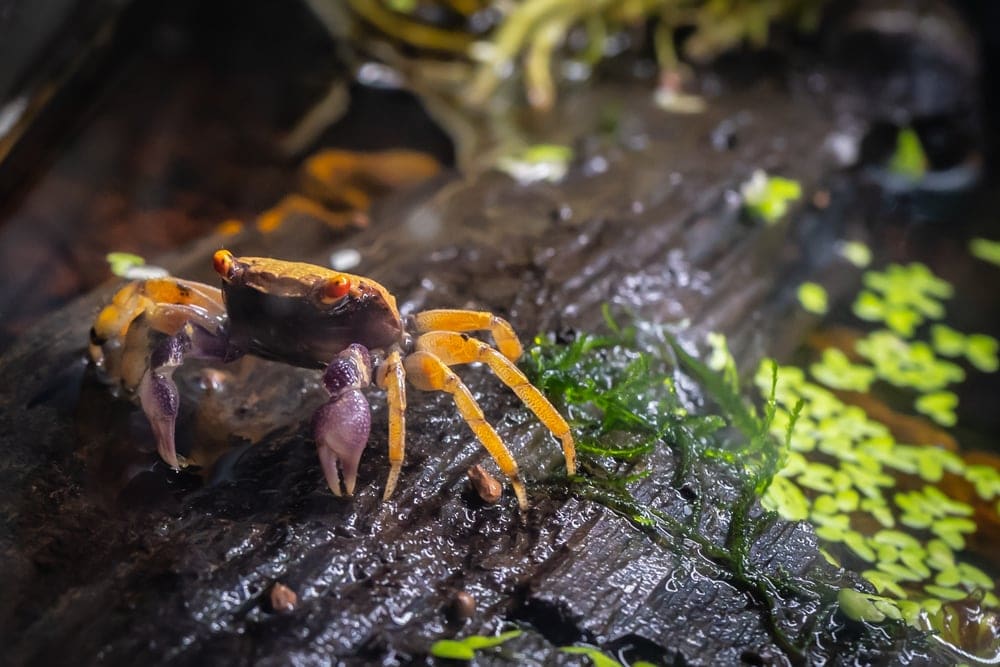
Vampire crabs exhibit vampire-like behavior not to mention their bright red or orange eyes, food consumption is when everyone else is asleep and that is from dusk to dawn. The crabs are not fully aquatic and you will, therefore, have to provide some land like features in your aquarium.
Tank requirements
Vampire crabs molt by hiding themselves in the substrate, you should, therefore, ensure that you provide a soft substrate. And to offer an out of the water and land like experience, include some floating plants or driftwood. Water PH could range from 7.5 to 8.0 degrees, and water temperatures should be up to 80 degrees, invest in a tight-fitting tank hood to prevent your crab from escaping.
Feeding
For optimal nutritional benefits, variety is key and here you could provide your crab with some algae and blanched vegetables, earthworms are also a tasty snack for the crab and should be provided in plenty.
Compatibility
Snails and shrimps are the only known welcome options for the vampire crab tank mates because there is a high possibility that if you include fish in the aquarium they may end up feeding on the tiny vampire crab.
6. The Red Claw Crab
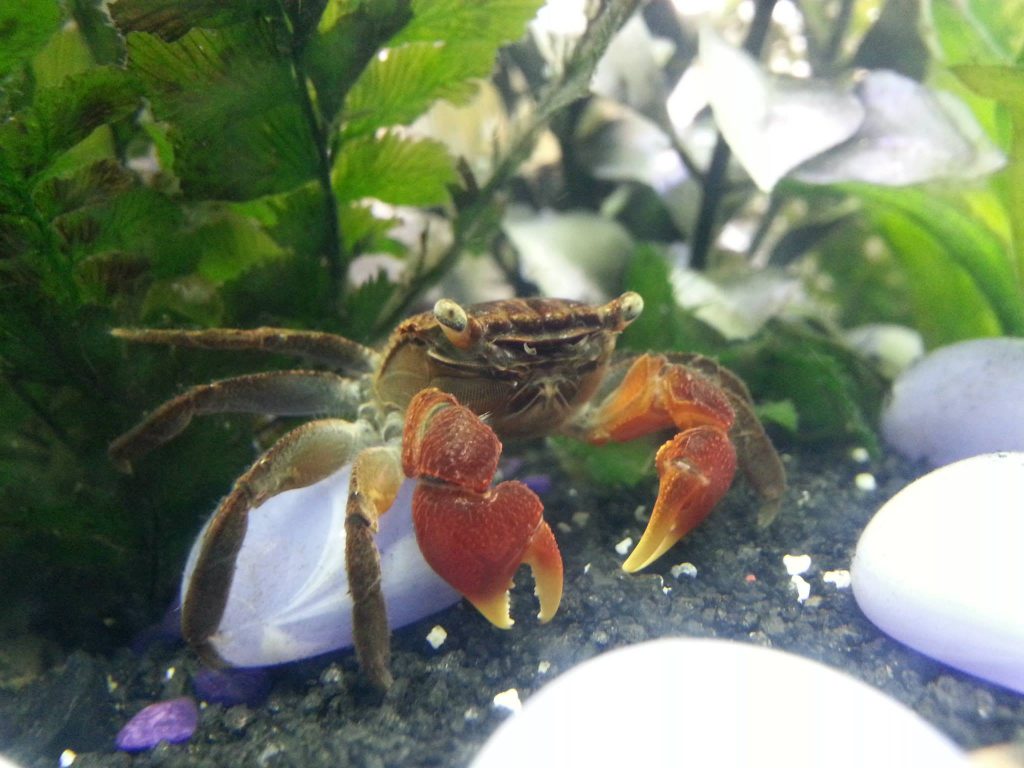
The red claw crabs are known for preying on slow-moving, or sick fish and have their origins down in the Indo-Pacific region from Zanzibar.
Tank requirements
Red claw crabs are semi-aquatic which means that they also need exposure to land, but be careful not to leave them out for too long as they may dry up and die. Acceptable water temperatures range from 76-80 degrees Fahrenheit. And to prevent the crab from being stressed you should provide some land environment that is inclusive of a sandy space.
Freshwater plants, rocks, and caves are a welcome option for your crabs to disappear to when it’s necessary.
Compatibility
The red claw crab will do well if it is housed with other female crabs; they tend to feed on other fishes so it is best to keep them in a species only tank. However, you could also incorporate some fast-moving fish but with plenty of space for hiding.
Feeding
As we said earlier variety is key and you could thus feed your red claw crab with some green leafy vegetables, worms for proteins (blood worms, and the white worms). Commercial foods can also be offered to provide additional nutrients such as the shrimp and crab pellets, and the algae and veggie wafers.
7. The Tanganyika crab
Just like the many fish species, Tanganyika crabs despise being kept in the same aquarium with their male counterparts, as they tend to get territorial and aggressive. They are fully aquatic so it would be best to provide a similar environment to their natural habitat of Lake Tanganyika.
Compatibility
The only viable suggestion if you are looking to house the Tanganyika crab is by pairing it with the Tanganyika Cichlids species. Apart from that all other tank dwellers will be viewed as a live buffet and will thus be taken down one by one.
Not much research has been done on the Tanganyika crab, but we do hope the above information will help you make a wise choice.
Shrimps and snails can be substituted with the crab and with the above information it would be easy to choose one that you can properly care for.
